“I define creativity as the process of having original ideas that have value. Creative work in any field often passes through typical phases. Sometimes what you end up with is not what you had in mind when you started. It’s a dynamic process that often involves making new connections, crossing disciplines and using metaphors and analogies.” Sir Ken Robinson
 Although there is a strong dialogue surrounding the value of creativity in schools, the creative components of classroom tasks remain largely unmeasured.
Although there is a strong dialogue surrounding the value of creativity in schools, the creative components of classroom tasks remain largely unmeasured.
I often wonder how this separates and perhaps devalues creativity, and our subject, in this climate of high-stakes data. But that’s for another time…
At their core, creative projects require creative processes or behaviour in combination with creative thinking.
Despite the fear that creativity can only be subjectively viewed (wrong – check out these articles from Ken Robinson and Grant Wiggins to explore more on this), there are some very tangible markers and four questions I use to guide creative pedagogies and practice.
How creative is my task?
1. Does it call for an original response?
If a task has an obvious answer, one ‘correct response’ , it may not provide opportunities for creative thinking. As Ewan McIntosh has suggested, ‘non-Google-able‘ tasks are filled with rich higher order thinking…and neither the textbook nor the teacher know the answers. Questions that have an open-ended structure and require original work can evolve through a process that begins with research, but inventing, designing, composing and creating are the hallmarks of the highest levels of Bloom’s Taxonomy.
2. Is it difficult but rewarding?
Creative tasks are challenging, and should be, as students try new things, explore the unknown and think deeply. But often they also involve fun, energy and enthusiasm. Why? If kids know why they are doing something, the purpose, they do it better. Designing tasks that allow students to explore their interests and passions, in combination with an opportunity to create something significant and meaningful can increase motivation. They are willing to work hard on task that allow them to adopt the role of ‘creator’ because it has value, meaning and importance. When students believe they are getting better at something they understand and that they know matters, they do it best.
As Daniel Pink has suggested, schools can foster ‘break-through’ and creative work by implementing strategies that combine autonomy, motivation and mastery – allow students time to follow their passions and interests, but expect results; high standards in combination with autonomy result in student’s producing their best work.
3. Does it require collaboration?
Opportunities to engage with diverse perspectives, share their thinking and skill-sets can enhance creativity. Working in an environment that fosters the cross-pollination of individual ideas, one where debate is welcome, constructive and respectful, can lead to more original results.
![ipadartroom]() 4. Is the student work diverse?
4. Is the student work diverse?
Creative projects are as individual as their creators. A personal response should demonstrate a unique vision and original thought. So, if you finish an activity and your students have all produced similar work it’s time to reflect on the opportunities the task allowed for the learners to follow their ideas and interests while actively leveraging their own skill set.
Last word…
In Visual Art there is a simple test that separates the truly creative tasks from those the others.
Do you need to put the student’s name on the work to identify the art-maker?
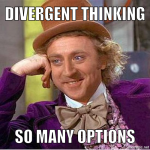
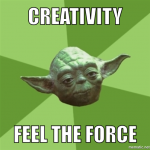
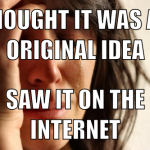
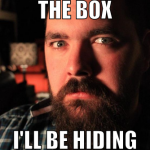
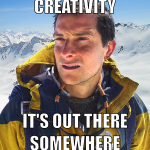
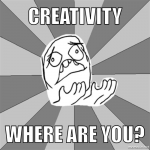
If you liked this post, check out ‘Creativity – Lessons for Teachers?‘
